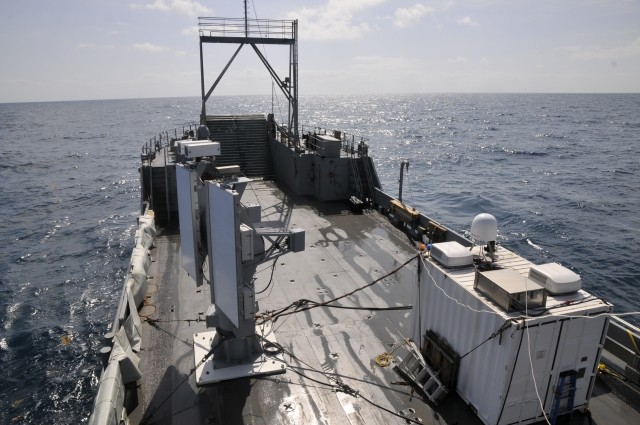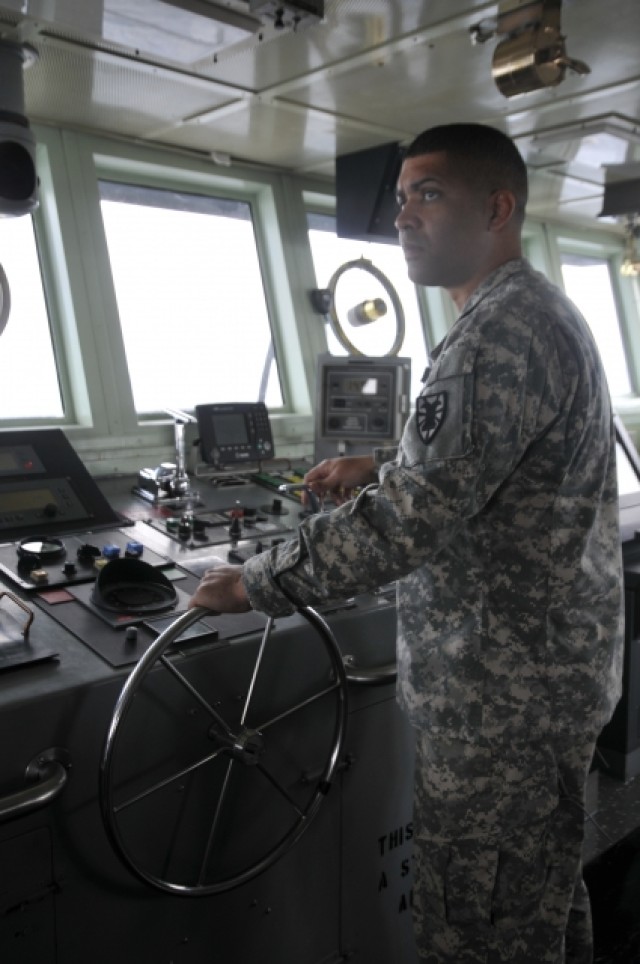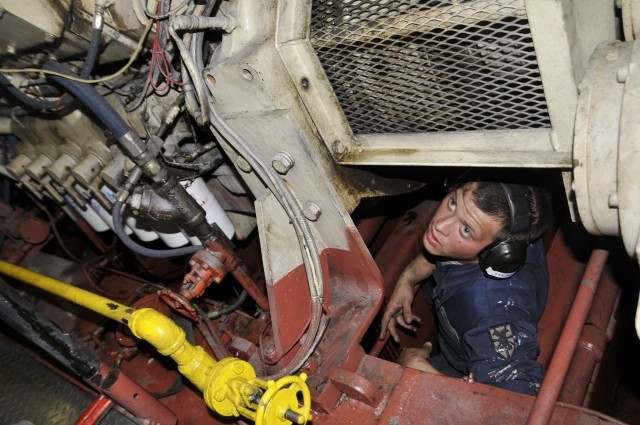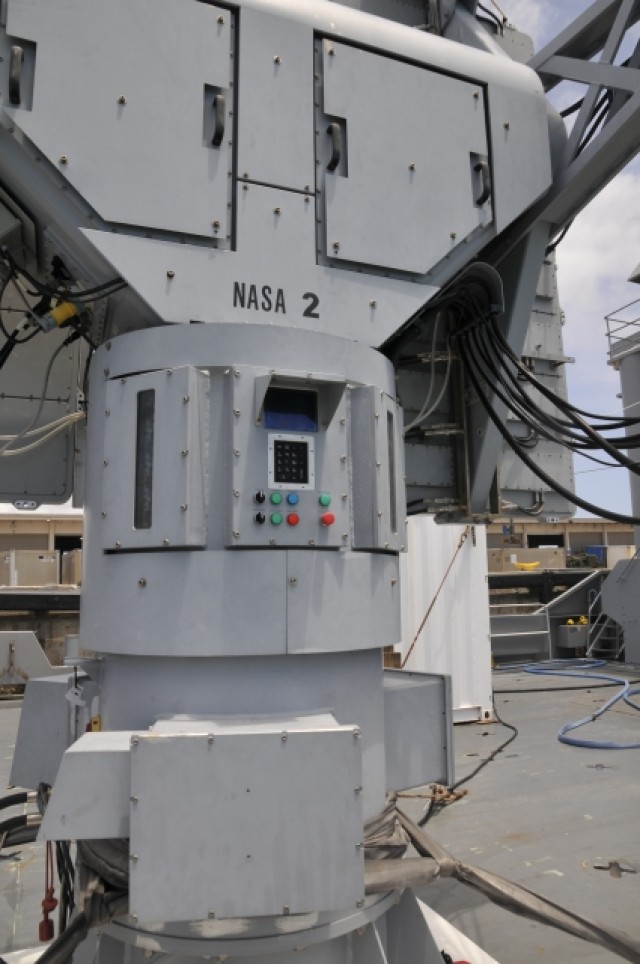FORT EUSTIS, Va. - NASA's shuttle Atlantis embarked on its final mission May 14th at 2:20 p.m. from Kennedy Space Center located near Cape Canaveral, Fl. with assistance from 97th Transportation Company (TC), 10th Transportation Battalion, 7th Sustainment Brigade.
Atlantis, which has completed 32 missions the first being in October 1985, is scheduled to complete a 12 day mission with a 6 member crew to deliver a Mini Research Module along with supplies to the International Space Station before retiring from flight.
The Brandy Station 2005, a Landing Craft Utility vessel, aided NASA with the successful final launch by transporting a Weibel X-Band Doppler Radar along with a 4-man crew consisting of 3 Doppler radar technicians from Doppler Tech Inc., located in Yuma, Arizona and a communications officer from Northrop Grumman that were contracted through NASA to track the first 3 minutes of the launch before the space shuttle surpassed the earth's horizon and supply NASA with all information acquired during the tracking process.
The LCU-2000 series has LO-LO (Load On - Load Off) and RO-RO (Roll On- Roll Off) cargo capabilities with a limit of 350 short tons (320 tons). The deck is permanently equipped with hardware that secures containers and many other different types of cargo to avoid shifting in unfavorable weather conditions. The vessel's flat bottom design allows for bare beach cargo operations, which is vital during missions where improved ports are not available.
The Brandy Station 2005 was chosen for this mission because of its diverse water craft capabilities. "The LCU-2000 handling characteristics make this vessel series a versatile one," Chief Warrant Officer Johnnett Razon, Brandy Station vessel master, 97th TC. To be able to spin 360 degrees accurately in a small area compliments the NASA equipment's job. Our company also possesses experienced Vessel Masters that understand the LCU-2000 capabilities and use them to their advantage, making us a viable solution for accurate navigation."
"The 97th Transportation Company's role in the Space Shuttle Program is to aid with the tracking of the Space Shuttle for safety and emergency purposes, as well as tracking the shuttle's solid rocket booster casings from the time they separate from the shuttle until their landing at sea," says Razon.
In the last year alone, Razon has participated in five shuttle launches aboard the Brandy Station and aided in Operation Unified Response as vessel master. Razon's expert skills in maneuvering and navigating the 174-foot long vessel and the crew's attention to detail in maintenance of the vessel were crucial to the success of the mission.
"The skipper (Razon) knows his boat and knows what to do to ensure that our radars stay aimed exactly where they need to be," say Thomas Peabody, a technician from Doppler Tech Inc. "Without the vessel successfully maintaining its position while it is up against waves and winds, we cannot accomplish our mission to track the shuttle and the solid rocket boosters."
"The radar technicians onboard track the casings which utilize parachutes as they descend to sea," says Razon. This allows both NASA retrieval ships, Freedom Star and Liberty Star, to recover the boosters for refurbishing and reuse keeping the program as economical as possible."
Located approximately 7 miles out to shore from the launch, the Brandy Station 2005 and Doppler Tech Inc., worked in tandem to ensure that the 20-foot tall radar was positioned properly in relation to the launch pad and fully functional amid the waves of the ocean to obtain technical information pertaining to the Atlantis launch and the point of debarkation of the boosters.
A combination of the Brandy Station's stellar crew and Doppler Tech Inc.'s functional knowledge of Doppler radar operations led to the group being the only vessel board radar unit to effectively track the shuttle and boosters in their entirety until beyond the horizon of all vessel board radar units dispatched on the Atlantis launch mission.
While this is the last Atlantis launch, this is not the last launch that 97th TC will be involved in. Brandy Station 2005 is scheduled to participate in another NASA shuttle launch this week in conjunction with the crew from Doppler Tech Inc.
Story and photos by Spc. Krista Howell, 7th Sustainment Brigade Public Affairs For queries, contact 7th Sustainment Brigade Public Affairs at: (757) 878-5112 ext. 268.
For high-resolution photos and stories by the 7th Sustainment Brigade, please contact the Digital Video and Imagery Distribution System by calling (678) 421-6612 or access them online at http://www.dvidshub.net/units/7SB










Social Sharing